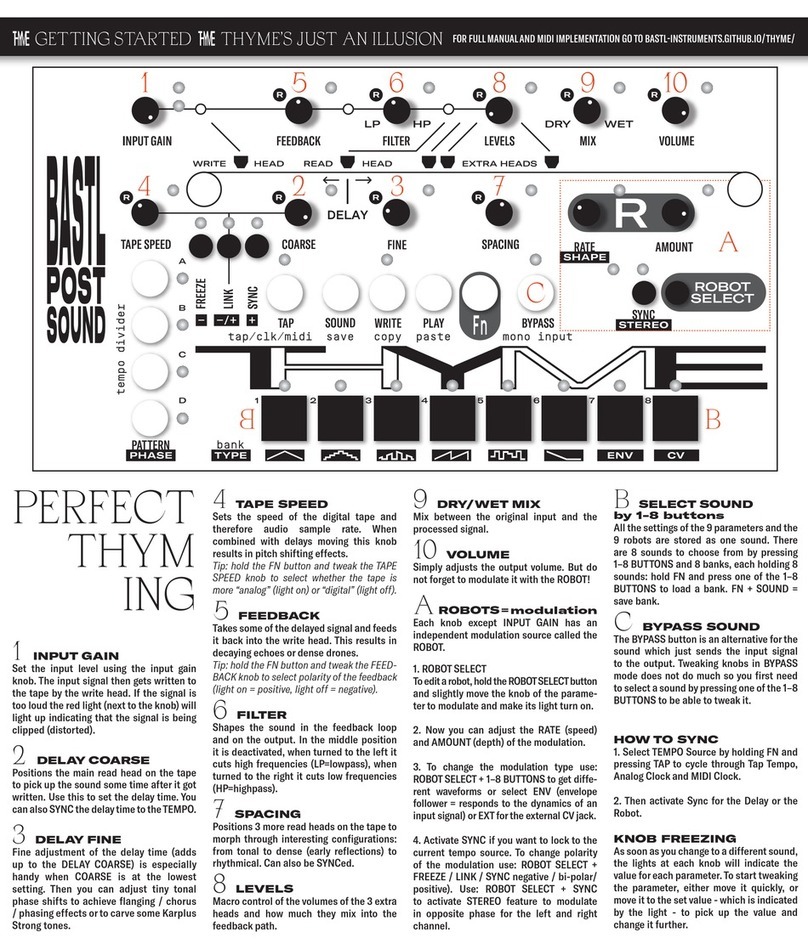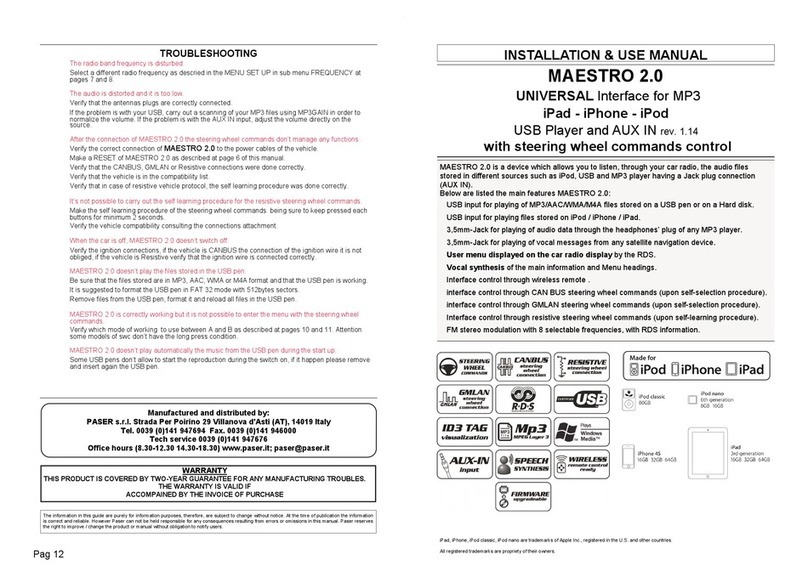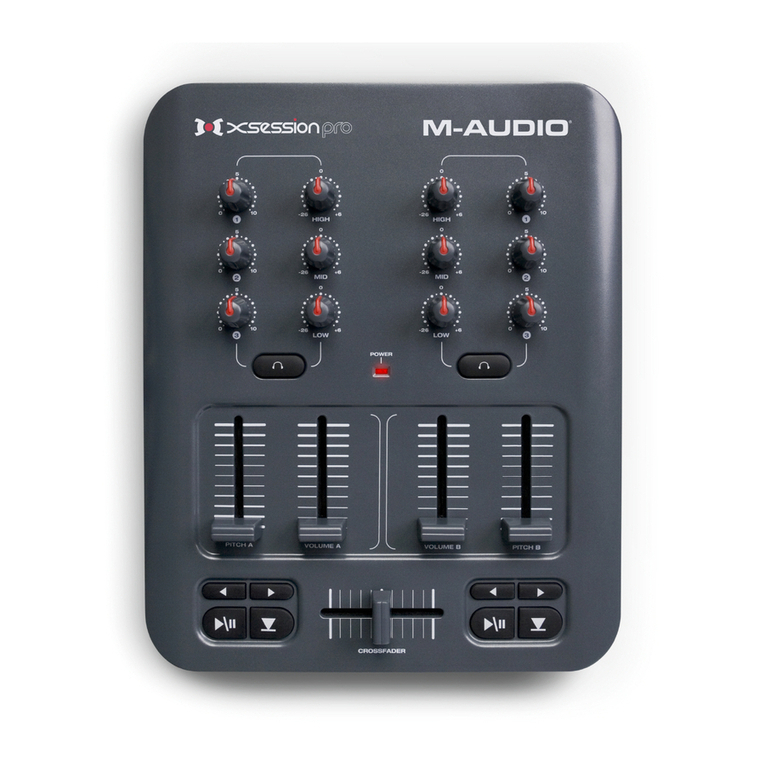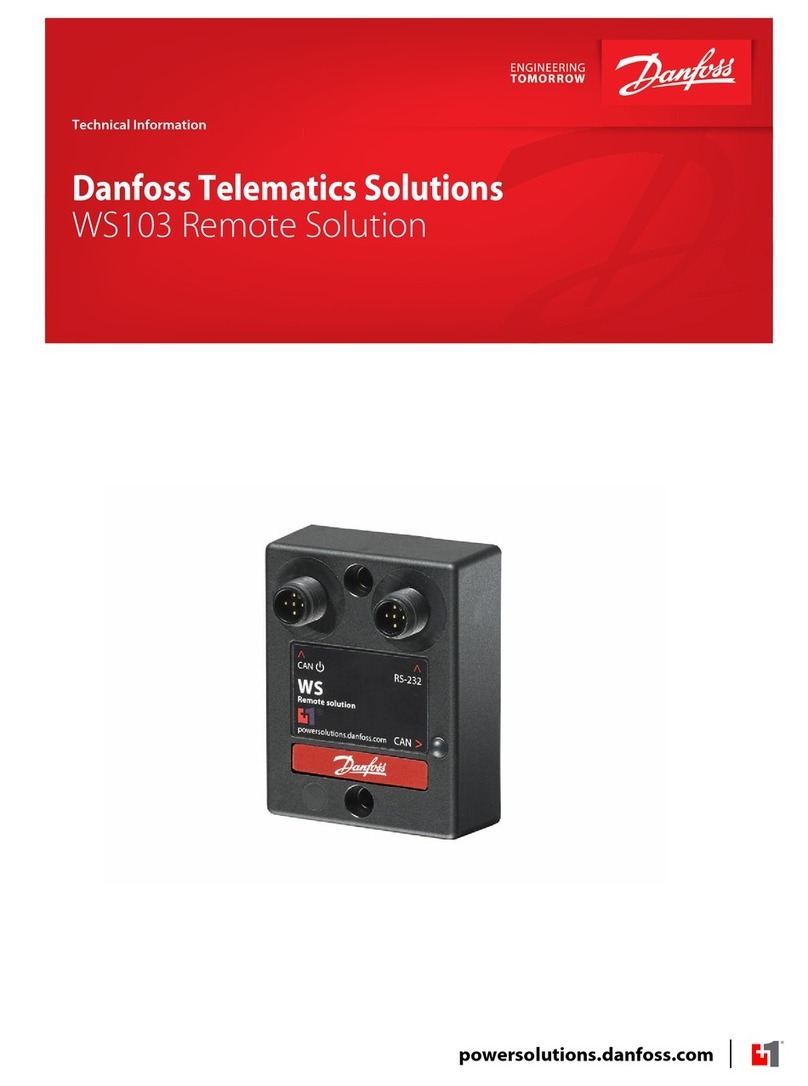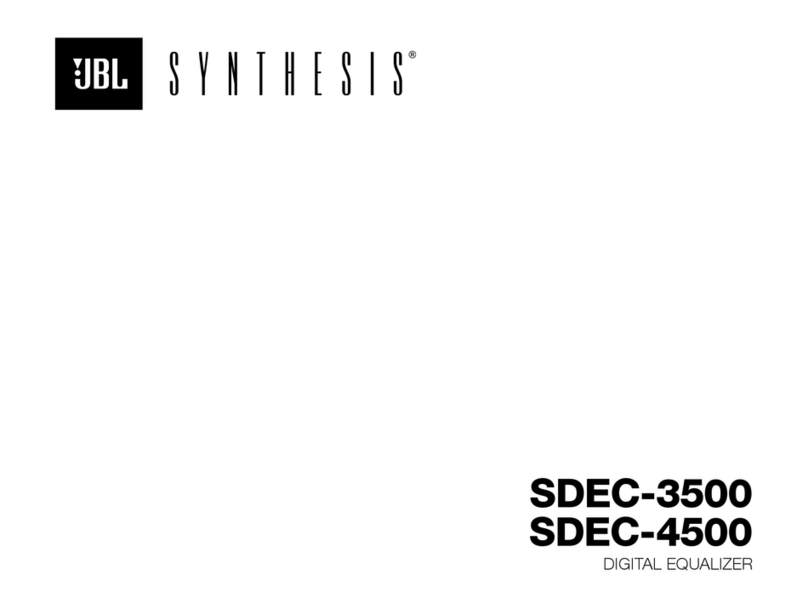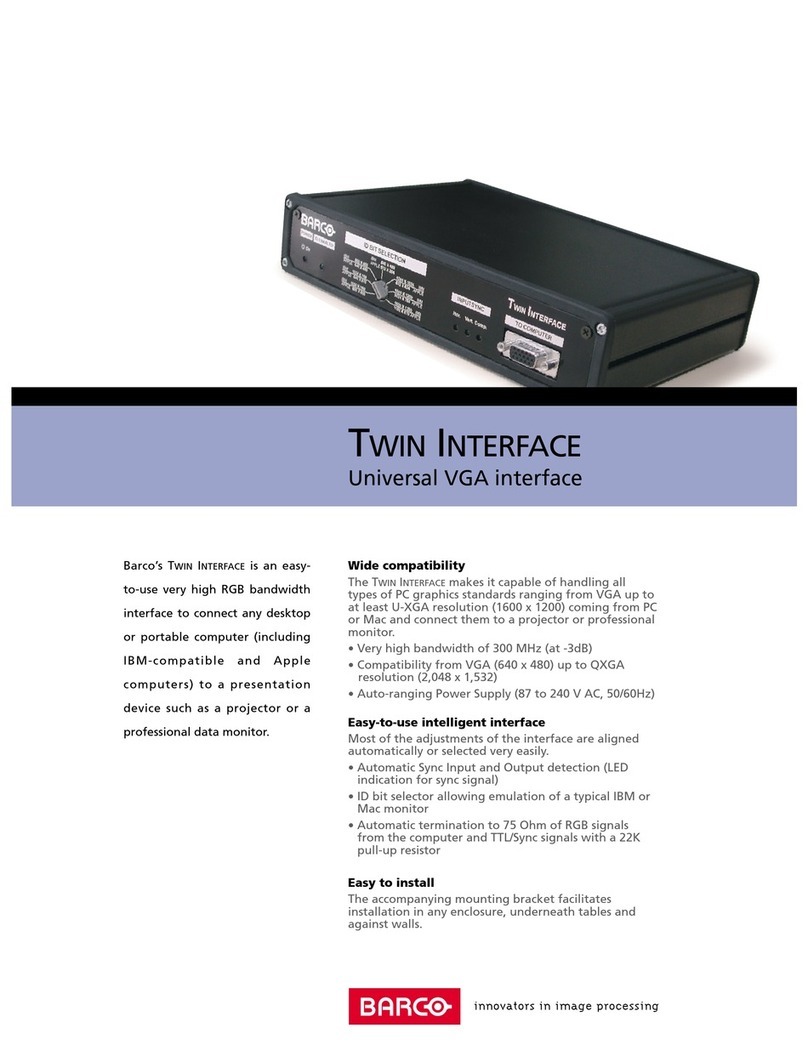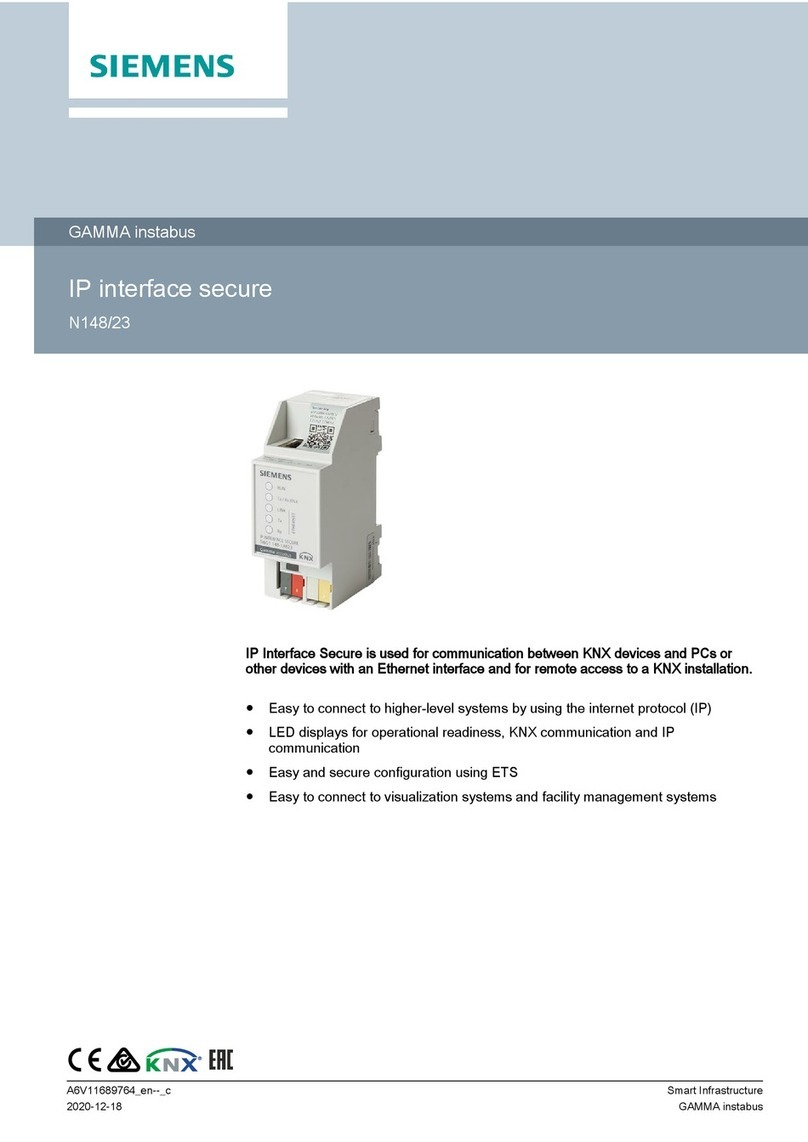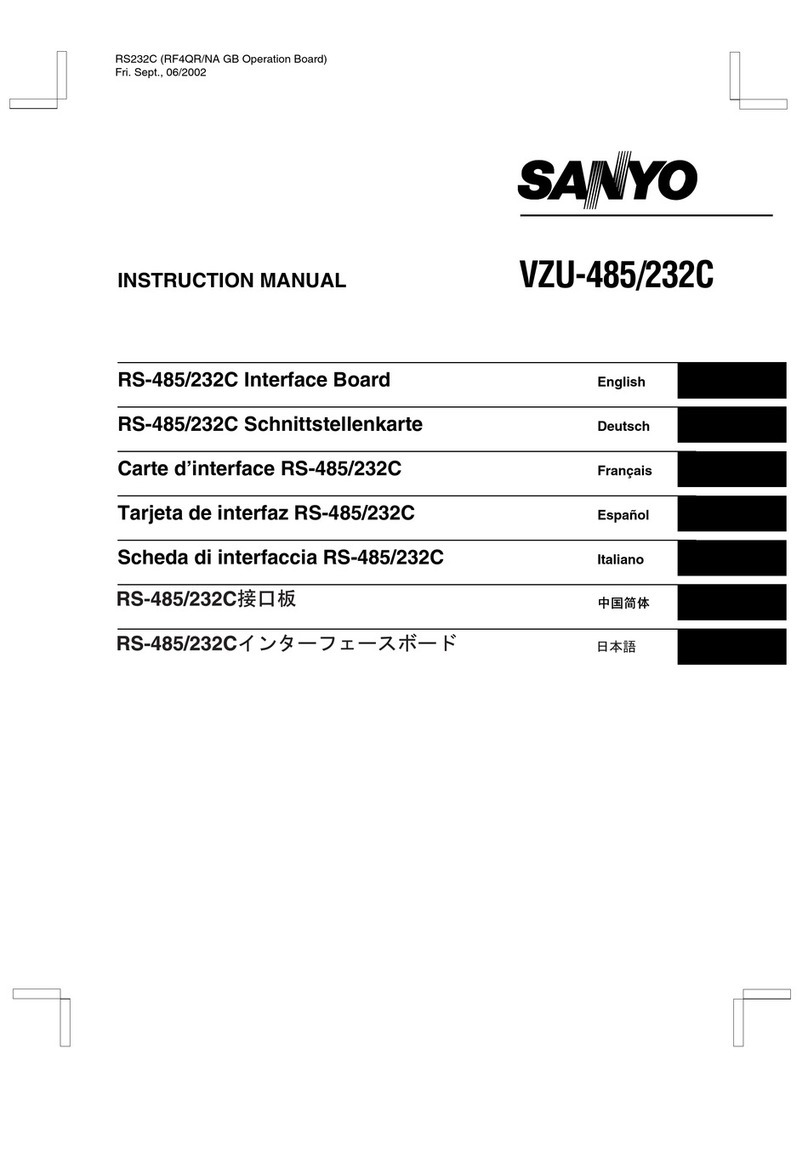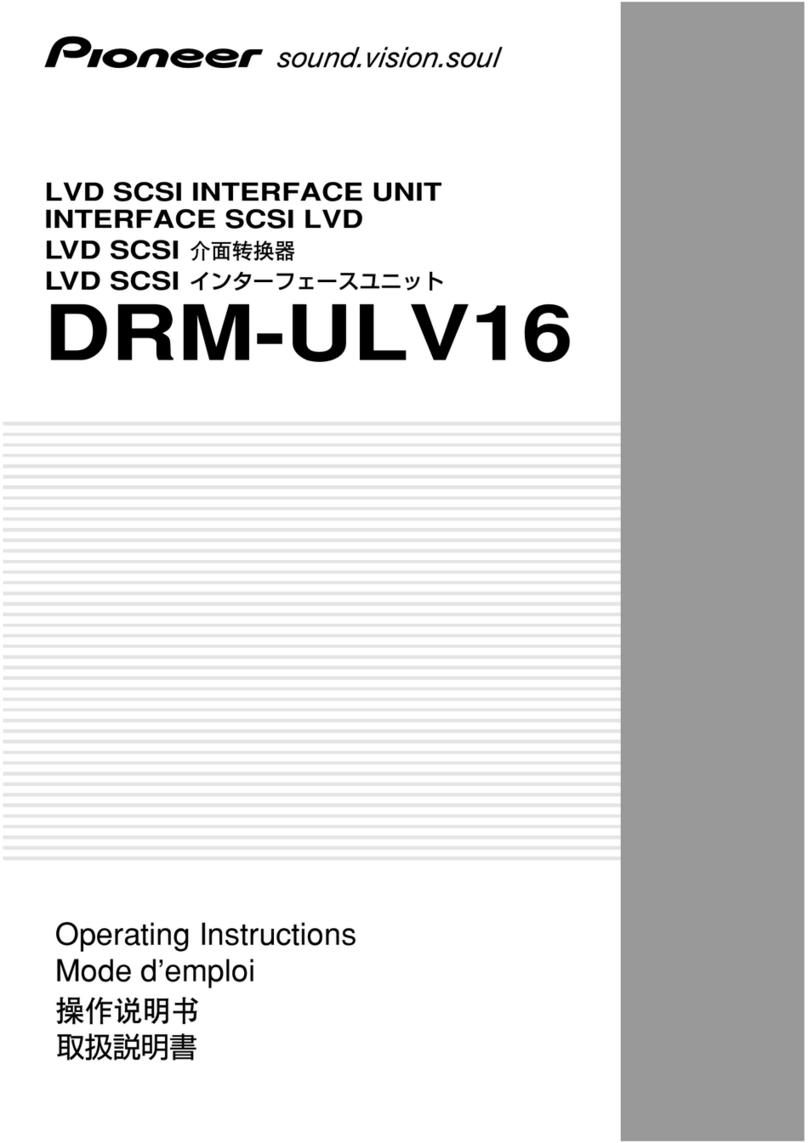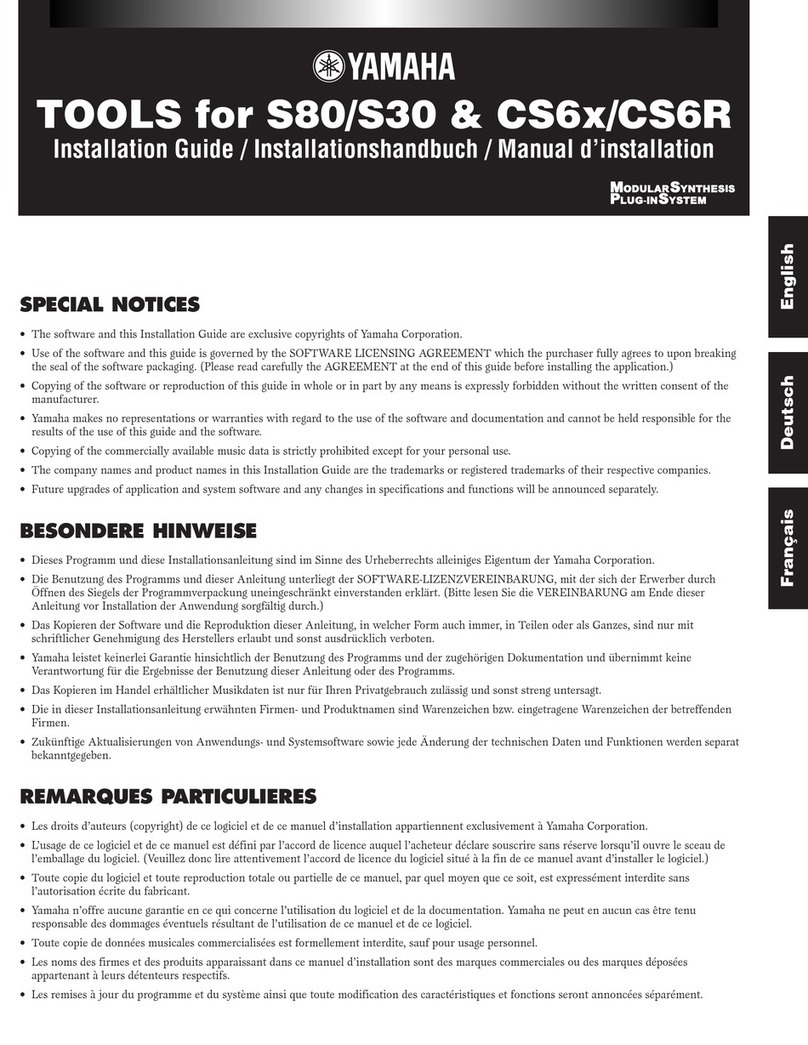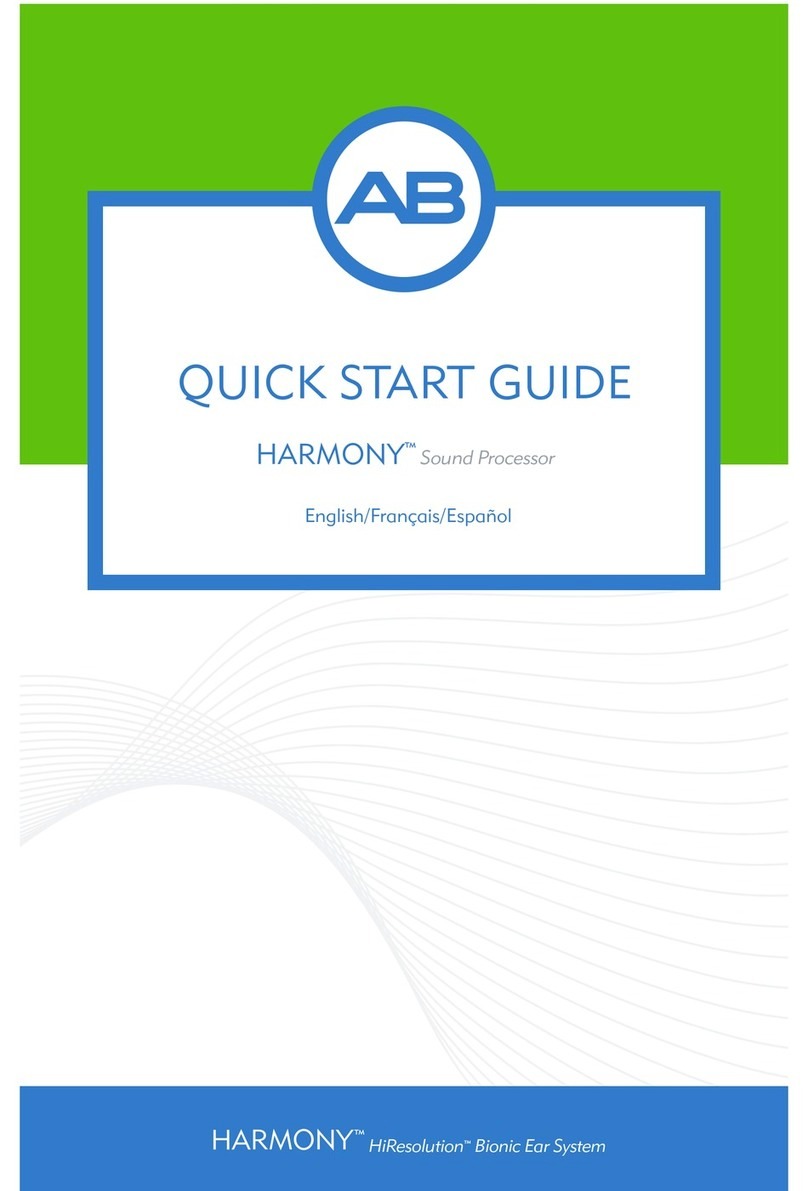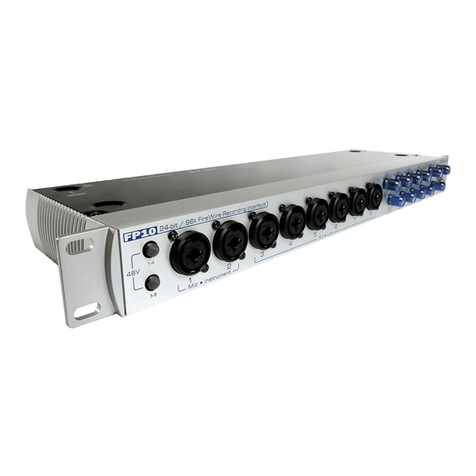BASTIL Instruments TROMSO User manual

S&H
IN
INTHR
OUT
OUT
TRIANGLEFM
GATE
T&H
VCO
VCO+comparator+S&H
analog downsampler & more
LFO
V/OCT
A
T
T
E
N
U
A
T
O
R
T
H
R
E
S
H
O
L
D
V
C
O
R
A
T
E
TROMSØ
S&H
V
C
O
C
M
PRTR
Ø
T r o m s ø
ANALOG DOWNSAMPLER & MORE
Triangle core VCO with Triangle output of +/- 5V
amplitude.
The rate of the VCO is set by the VCO RATE knob and
the Range of the VCO is set by the switch. In VCO Range
the frequency goes from 2Hz to 45kHz and in LFO Range
from 50s to 50Hz. With strong negative voltages at the
FM input, the rate of the VCO can go even lower.
instruction
Tromsø is a combination of basic utilit modules: VCO,
Comarator and Samle & Hold. Internal normalisation
allows ou to instantl use it as voltae controllable
analo downsamler or samle rate reducer, if ou like.
Thesamle rate is set b VCO Rate and a sort of “drwet”
mix effect which is achieved b adustin the Threshold
when in the Track & Hold mode.
This architecture was insired b a machine called
Distortotron, made in 1 – aruabl the first analo
downsamler and bit distortion of its kind. That machine
came from a collaboration between Norweian musician
Mental Overdrive based in Tromsø and the inventor rou
Psbe Svein Bere and Henrik Sundt. It was created from
a need to brin back oldschool samler aliasin and lo-fi
effects and it heavil influenced the sound of the album
Plued, which is the landmark of the so called Tromsø
sound.
The VCO of the Tromsø module can track one volt er octave
when the Attenuator on the FM inut is full oen, which
makes it ossible to have the downsamlin effect track
the itch of a laed note. All utilit modules of Tromsø
can also be used indeendentl. Internal normalisations are
disconnected when usin the inut acks.
The control voltage for the pitch of the VCO is the sum
of the position of the VCO RATE knob and the voltage on
the FM Input going thru the Attenuator Knob. When the
Attenuator knob is fully CW, the FM input tracks 1V/Oct
over more than 5 octaves and has an input impedance
of100k ohms.
The comparator section has 3 connectors and a Threshold
knob. A Comparator is a device which takes two voltages,
compares them and outputs a HIGH gate, if one of
the voltages is greater than the other. In the case of
Tromsø, if the voltage at the CMPRTR IN is greater than
the THRESHOLD voltage, it outputs a HIGH gate. The
THRESHOLD voltage is the sum of the position of the
Threshold Knob (range of +-6 volts) and the voltage on
the CMPRTR THR input. The Triangle output of the VCO
is normalised to the CMPRTR IN, which means that the
CMPRTR OUT creates a standard pulse waveform from
the VCO (with amplitude approx. +/-5 volts).
The indication LED is driven by the CMPRTR OUT signal.
Sample and Hold (S&H) is an analog voltage storage
device. It looks at voltage at the S&H INput at agiven
time (rising gate on the S&H GATE input ) and
remembers that voltage and keeps it at the S&H OUTput.
This simple device is hugely useful for a great amount of
unique techniques of modular synthesis, especially when
combined with other modules
The S&H circuit has two modes, selectable with
aswitch. S&H mode was described above. The Track
andHold (T&H) mode is a variation of the S&H circuit.
The difference is that while there is a HIGH GATE, it lets
the INput signal through to the Output (it tracks the
signal) and at the falling GATE, it remembers the last
voltage at the input and holds that voltage until there is
another HIGH gate. See the diagram to wrap your head
around it!
Signal Input
Signal Output
Sample and Hold
Signal Output
Track and Hold
Gate Input
Normalisations within Tromsø allow it to be simply used
as Voltage Controllable Downsampler, but once you plug
cables into the normalised inputs you can use the VCO,
Comparator and S&H sections independently. The Triangle
output of the VCO is normalised into the Comparator
input and the Comparator output is normalized to the
S&H Gate input. This is indicated by the arrows on the
front panel.

Triangle core VCO
exponential FM input with Attenuator Knob
tracks 1 volt per octave over about 5 octaves when
attenuator is fully open
switch to change range of the VCO Range – high=
= 2Hz-45kHz, low=50s – 50Hz
VCO output is normalised to the Comparator Input, thus
the Comparator Output creates pulse waveform for the
VCO (Threshold = PWM)
comparator has a Threshold Knob, CV Input for
Threshold and an Input and Output with an indication LED
S&H section has a gate INput, signal INput and OUTput
switch to select mode: Sample & Hold (samples at rising
gate and then holds) or Track & Hold (at high gate tracks,
at low gate holds)
Sampling time S&H mode <25uS, in T&H mode up to 5uS
S&H hold drift rate <0.4mV/s
Hold capacitor charging slew rate 0.5 V/uS
Alications of Tromsø
VC downsampler with VC Intensity is achieved simply
by plugging the processed signal into the S&H input and
listening to the S&H output. Both switches should be in
the upper position (VCO, T&H). In this setup the audio
rate VCO sets the sample rate at which the S&H circuit
is being triggered. Because the T&H mode is used, the
Comparator threshold sets the pulse width at which the
downsampling is processed and therefore acts as an
intensity control. Soundwise it is similar to a DRY/WET
mix, but technically different. Both the VCO Rate = Sample
Rate and the Threshold=intensity are voltage controllable
in this setup. Please note that the VCO tracks 1V/Oct with
the Attenuator fully CW, so the downsampling effect can
track your main VCO.
Experimental FM VCO with T&H on the input is achieved
by plugging the S&H output to the FM input on the
Tromsø and feeding (preferably) audio rate modulation
signals into the S&H input. With the comparator threshold
knob fully CCW, we obtain a classical exponential FM
sound, when listening to the Triangle output of the VCO.
However, adjusting the Threshold CW brings in a lot of
chaotic and rich sound behaviours. When the Comparator
is producing very narrow pulses (almost fully CW), it
samples the FM input on each full waveform cycle of the
Tromsø VCO and outputs the whole waveform and then
samples again at the next waveform cycle. This results in
very deep and unique FM modulation sound even at very
high pitch.
Random stepped voltages & Colorful noise patch is simply
achieved by plugging any type of noise signal into the S&H
input. When the VCO is in LFO range and in S&H mode
it produces stepped random voltages. When the VCO is
in VCO range the result is colorful noise. If used at audio
rate and in T&H mode, the comparator Threshold gives
technical details
features
5HP width
PTC fuse and diode protected 10pin power connector
45mm deep
current consumption: +12V: <35mA, -12V: <35 mA
Before connectin the ribbon cable to this module
disconnect our sstem from ower !
Double check the olarit of the ribbon cable and that
it is not shifted in an direction. The red cable should
be attached to the -12V rail, both on the module and
on the bus board side!
lease make sure of the followin
you have a standard pinout eurorack bus board
you have +12 and -12 power rails on that bus board
the power rails are not overloaded
Although we put protection circuits in the device,
we do not take any responsibility for damages
caused by wrong power supply connection.
After you connected everything, double checked
it and closed your system so no power lines can be
touched by your hand, turn on your system and
test the module.
!
Connectin module to our sstem
Take it Carefull
P C B
amuch greater timbral control over the sound. In both of
these setups it is more interesting to use different types
of noises than white or pink. The Noise Square module of
Bastl offers plenty of choices. Especially for the random
stepped voltages, sources such as Metallic or Digital noise
result in a limited number of voltages at the output, which
is very musical.
Classical S&H Staircase LFO waveforms can be obtained by
plugging in any LFO type of signal and using the Tromsø
VCO to trigger the staircase effect. You should be in LFO
and S&H mode. More complex waveforms can be achieved
by using the T&H mode and adjusting the comparator
Threshold.
power
-12
red
tromso v1.0
+12
GND
designed and produced in czech republic
BASTL-INSTRUMENTS.com
!
www.bastl-instruments.com
Other BASTIL Instruments Recording Equipment manuals
